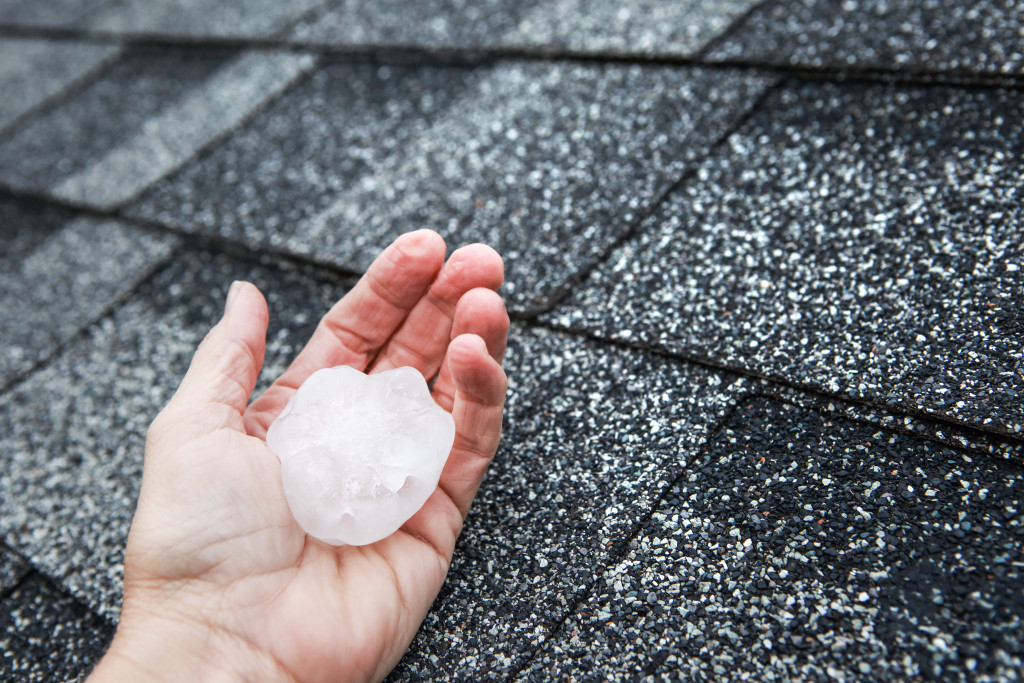Hailstorms are incredibly fascinating and sometimes frightening weather events that strike different parts of the world. In the U.S., hailstorms are prevalent and often cause substantial property damage, leaving homeowners and business owners with a hefty repair bills. But what causes hailstorms, and why are they so common in the U.S.? Here are some common factors contributing to hailstorms in the U.S. and how to prepare your home for it.
What is a Hailstorm?
A hailstorm is a storm characterized by large chunks of ice called “hail,” created when water droplets in the clouds freeze. The hail can range from very small pieces to large balls the size of golf balls or even baseballs, and they can fall with great speed and force, enough to cause significance to homes and other structures. It’s estimated to cost the country about $10 billion in damages annually.
Location
The United States of America covers a vast expanse of land, stretching from the Atlantic Ocean to the Pacific Ocean. Its size, coupled with its location within a transitional climate zone, makes hailstorms a relatively common weather occurrence. The transitional climate zone creates the perfect conditions for large hailstones to form. The zone is characterized by an inconsistent seasonal pattern, where hot air from the south meets cold air from the north. This creates a high probability for thunderstorms to form, which often comes with hail.
Topography
Another major factor that accounts for the frequency of hailstorms in the U.S. is the country’s topography. The U.S. is home to the Rockies and the Appalachian Mountains, which act as barriers during severe weather patterns. The mountains create a boundary that prevents cool air from mixing with warm air, leading to instability in the atmosphere. The instability causes strong updrafts, which push warm air up into the atmosphere, where it can cool and form ice. As the ice grows heavier and larger, it eventually falls to the ground as hailstones.

Climate Change
Climate change is a delicate issue that affects many aspects of life. Unfortunately, it also contributes to the frequency of severe storms and hailstorms in particular. The temperature increase leads to more unstable pockets of air, which eventually create thunderstorms. The warmer atmosphere also allows more moisture to enter the atmosphere, further enhancing the chances of hail forming.
Warmth of the Ground
Believe it or not, the warmth of the ground can play a massive role in the formation and severity of hailstorms in the U.S. Warmer temperatures increase the amount of heat energy available to storm systems, which creates more violent storms. This is because warm grounds provide an adequate energy source that fuels the thunderstorm, making it more potent and increasing the chances of hail forming.
Jet Stream Patterns
The jet stream is a powerful wind that moves across the atmosphere in the middle of the troposphere. The jet stream’s path and speed can influence thunderstorm development and the impacts of any hail they produce. Occasionally, the jet stream dips down, creating more severe storms that can lead to hail.
How to Prepare Your Home For Hailstorms
Hailstorms can be dangerous for you and your family. Here’s how you can prepare your home for hailstorms:

Inspect Your Roof
The roof is one of the most vulnerable areas of your home during a hailstorm. As such, it is essential to inspect your roof regularly to ensure it is in good condition. Look for any signs of damage or wear and tear, such as cracked or missing shingles or loose tiles. If you notice any serious issues, it is best to contact a professional roof repair service that can repair or replace any damaged areas of the roof. They can also upgrade your roof with hail-resistant materials like copper or steel.
Protect Your Windows
Windows are another area that is prone to hail damage. Installing storm shutters or impact-resistant glass can help protect your windows from hailstones. You can also consider using window films or covers to protect your windows during hailstorms.
Secure Any Loose Objects
During hailstorms, strong winds can cause outdoor furniture, toys, and other loose objects to become airborne, increasing the possibility of hail damage to your home. Secure any loose objects in your yard, garage, or deck to prevent this.
Reinforce Your Garage Door
Garage doors are also prone to hail damage, and it is essential to reinforce them to ensure they can withstand strong winds and hailstones. This can be achieved by adding horizontal braces, a stronger track system, or upgrading to an impact-resistant garage door.
Upgrade Your Roof Materials
If you live in a hail-prone area, you may consider upgrading your roof materials to ones more resistant to hail damage. Asphalt shingles, for example, can be upgraded to impact-resistant shingles, while metal roofs can be reinforced with thicker gauges or added insulation.
Hailstorms are a common and potentially destructive weather event in the U.S., but understanding the factors contributing to them can help you better prepare your home for future hailstorms. Thankfully, you can prepare your home by following the tips above. Doing so can help minimize the risk of damage to your home and protect your family from harm.

